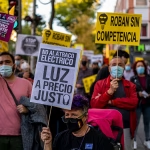The Joint Ministerial Monitoring Committee of OPEC+ (JMMC) is set to reaffirm the decisions made at the OPEC+ meeting in June during its upcoming meeting in August. Commerzbank’s commodity strategist Carsten Fritsch points out that this means the gradual withdrawal of voluntary production cuts, planned to begin in October, will continue as long as the market can handle the increase in supply. This stance was reiterated by Russian Deputy Prime Minister Novak, emphasizing the need for the market to be able to absorb the additional supply.
The OPEC+ meeting in June saw a consensus to gradually increase oil production levels, with a plan to ease production cuts starting in August. This decision was made in response to the recovering global demand for oil and the improving market conditions. However, this move was contingent on market conditions remaining stable and the ability of the market to absorb the additional supply without causing disruptions.
The upcoming JMMC meeting in August is expected to provide further clarity on the implementation of the decision to gradually increase oil production. The current plan is to maintain the gradual withdrawal of voluntary production cuts, ensuring that the market remains balanced and stable. This decision reflects the cautious approach taken by OPEC+ in responding to changing market dynamics and global demand for oil.
The Russian Deputy Prime Minister’s emphasis on the need for the market to be able to handle the increase in supply highlights the importance of maintaining a delicate balance in the oil market. As one of the key members of the OPEC+ alliance, Russia plays a crucial role in shaping the decisions regarding oil production levels and market stability. The decision to proceed with the gradual withdrawal of production cuts indicates a cautious optimism about the state of the global oil market.
Overall, the upcoming JMMC meeting is expected to reiterate the decisions made at the OPEC+ meeting in June and provide further guidance on the gradual increase in oil production levels. The focus remains on ensuring that the market can absorb the additional supply without causing disruptions or instability. This approach reflects the careful and strategic planning undertaken by OPEC+ in response to the evolving global demand for oil and the changing dynamics of the oil market.











